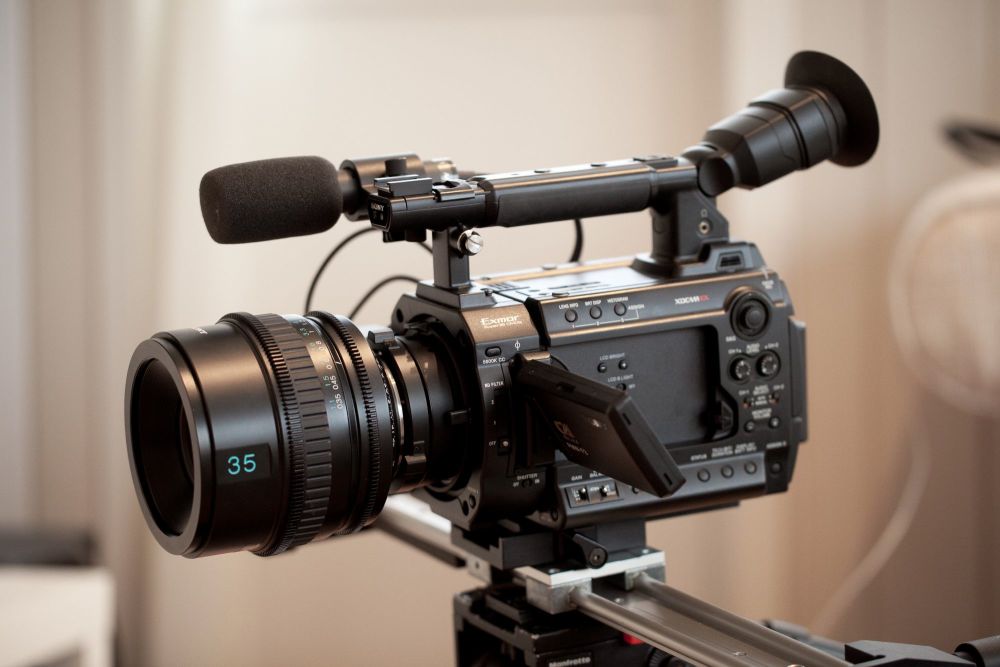Camcorders are a fairly new innovation, having only been developed over the last couple of decades, however that development has been rapid. The earliest days of camcorders saw immense machines mounted on wheeled platforms moved awkwardly around TV studios. Over a period of years, the industry began to make their cameras more versatile, which began a process which would see the camcorder change the way we view the world. From tape to digital content, camcorders are there to capture all occasions. The Internet has played its part in the democratisation of video content, and the camcorder business just continues evolving.
TV Video Cameras
The original camcorders arrived in TV studios in the late 1950s. The first camcorder used vacuum tubes which would get incredibly hot over a period of time. As innovation accelerated, the tubes became smaller and smaller, which allowed the cameras in turn to get smaller. Eventually, the tubes in camcorders were substituted with solid-state components and the TV camcorders became highly portable. Due to this, we have the ability to capture news as it happens and events which would have otherwise gone unseen.
Camcorders
The original camcorders had to be attached to tape machines to enable the capture of footage. Despite the fact that this constrained exactly how far the cameras could go, it created enthusiasm among the home market. In the late 1970s, the fight between the VHS and Betamax tape companies was intense and camcorders were produced to help both sides win the format war. In 1982, Sony effectively gave away the first Betamax camera to news organisations and introduced the start of compact video camcorders. In 1983, Sony refined it’s Betamax camera for the customer market and the gadget became very popular. By 1985, Panasonic had released its VHS camcorder which became even more popular (allegedly due to its uptake by the porn industry). In the end, the Betamax format was dropped in lieu of VHS, and tape camcorders were soon showing up in homes throughout the world.
Digital Video Cameras
Sony was also the first to release an all-digital camcorder with its D1 camera in 1986. The D1 footage was uncompressed however, which meant it was constrained in the amount of video it could actually record onto a solitary tape. In 1993, Ampex released the first compressed digital video camera called the DCT, which allowed hours of video recording to be done on one tape. This innovation resulted in a slew of the products and development by Sony, Panasonic and other. The cameras were getting smaller but the quality and resolution was improving due to the compression techniques.
Top notch Digital
A colossal leap forward in camcorder innovation happened in 2000 when Sony developed a new format which supported high definition video. This innovation would completely change the face of video production and result in vintage TV footage looking very embarrassing to a modern audience.
No More Tape
In 2003, Sony upended the industry again by releasing the first tapeless digital recorder. To start with, the Sony XDCAM was incredibly expensive – but prices soon dropped. By 2006, Sony, Panasonic, and other organisers were producing tapeless formats for both professional and consumer markets.
SD cards and the future

Sony and Panasonic have forged the way for tapeless digital video and next the innovations were downscaled to the point where HD video became available on smart phone. Another huge innovation was the arrival of SD cards by SanDisk which allowed hours of HD video to be recorded, removed and replaced from the camcorder as easy as pie. This intern has given way to MicroSD – a similar format but much smaller, allowing SD cards to be put into modern smart phones for even more video storage. More recent innovations have included 3D in 2010 and 4K Ultra HD for camcorders and smaller devices.



